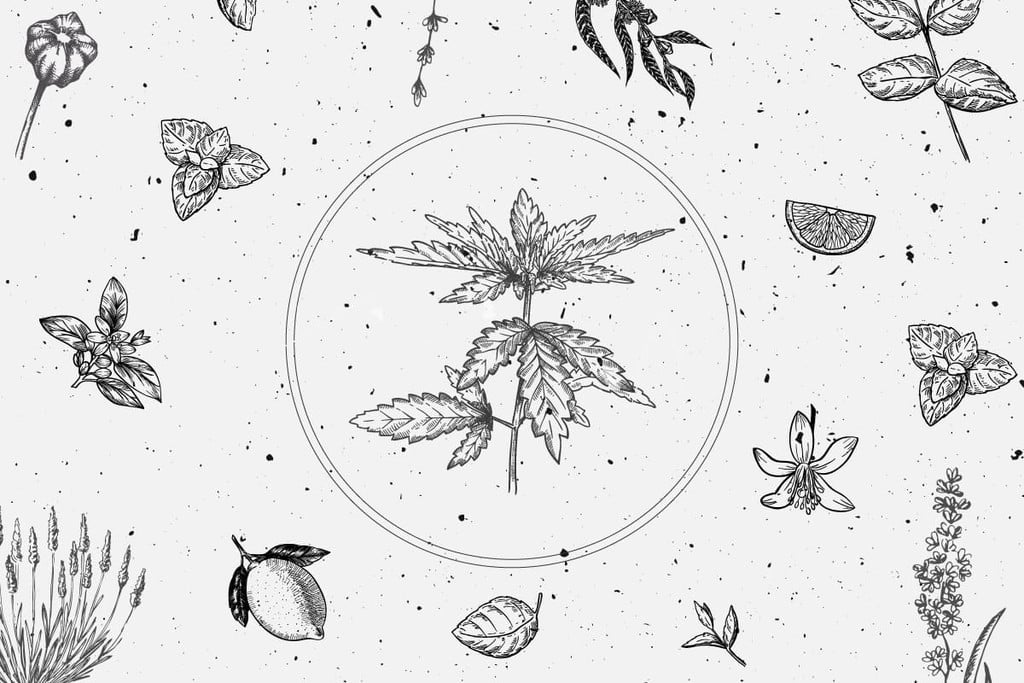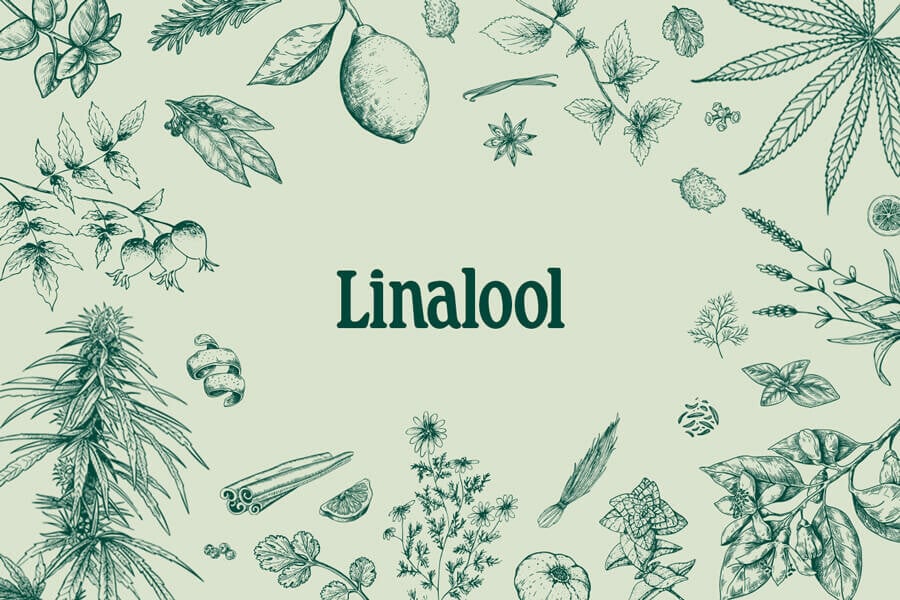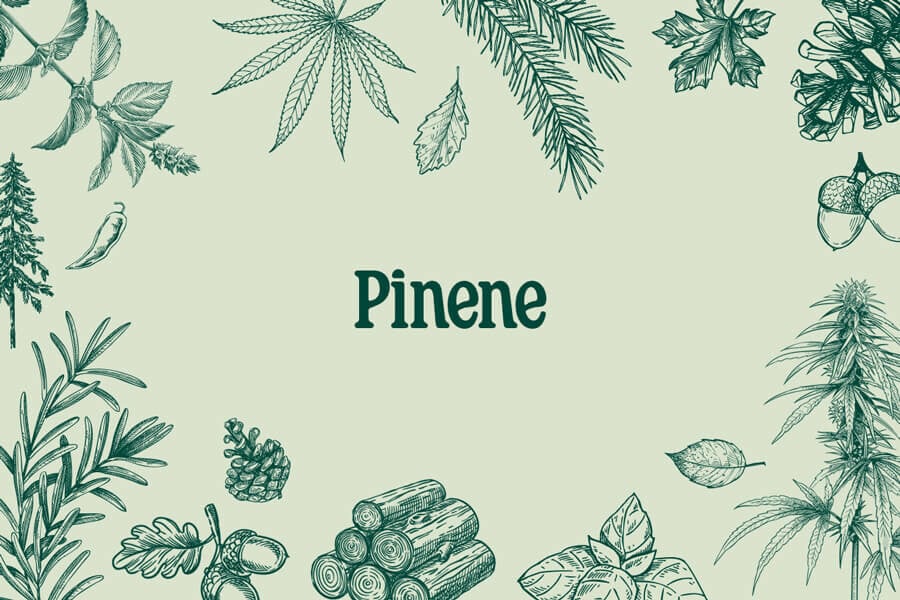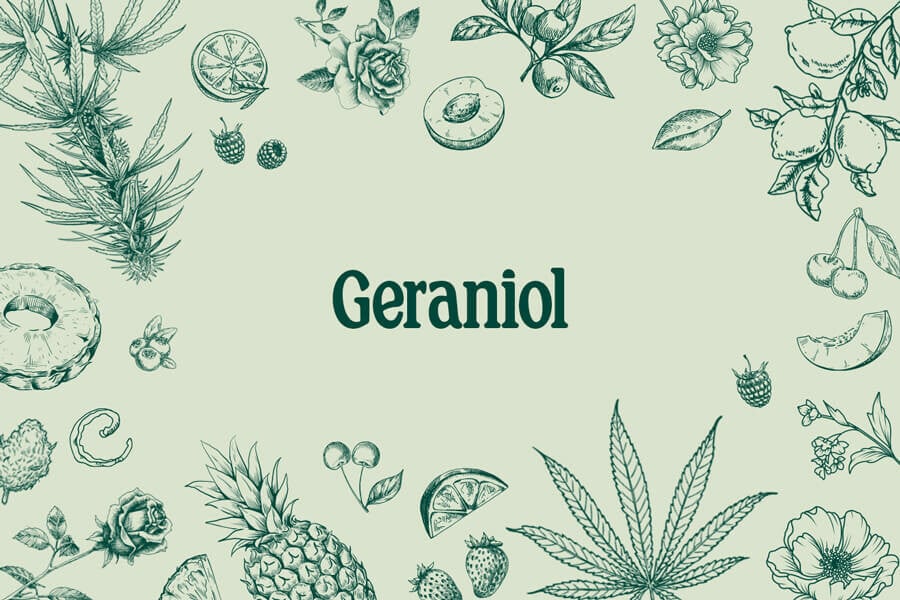.
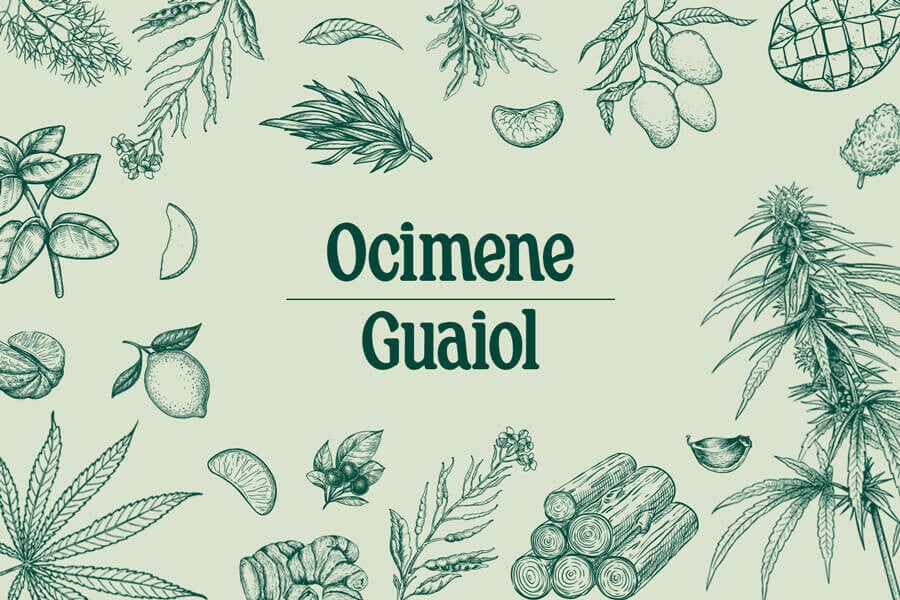
Cannabis Terpenes: Ocimene And Guaiol
Cannabis can contain up to 200 different terpenes, all of which work together to give the plant its unique aromas and effects. In this article, we examine ocimene and guaiol, two of the main terpenes in cannabis.
Cannabis contains hundreds of different compounds which combine to give the plant its unique effects and traits. While cannabinoids are often named as the main players responsible for cannabis’ therapeutic potential, terpenes play an equally important role.
In this article, we look at two of the main terpenes found in the cannabis plant, ocimene and guaiol. While there is a lack of in-depth research on these compounds, we’ll shed some light on what we know so far, and what it means for the future application of these terpenes.
WHAT ARE TERPENES?
Terpenes are hydrocarbons found within the cannabis plant. They are commonly referred to as the plant’s “essential oils” and play a vital role in giving cannabis its complex aromas and medicinal properties.
The cannabis plant can contain up to 200 different terpenes. However, there are roughly 30 terpenes (10 primary and 20 secondary) that are consistently found in high concentrations in most cannabis varieties. Ocimene and guaiol are two such examples.
The small variations in terpene concentration from one plant to another is what give individual strains their unique smells, characteristics, and effects. Hence, the science behind terpenes has received a lot of attention in the cannabis industry recently.
Terpenes also help the plant defend itself against disease and pests. From what research is available, terpenes are also noted for their medicinal properties, displaying anti-inflammatory, antifungal, antiviral, and other therapeutic benefits.

OCIMENE: A SWEET, YET POWERFUL MEDICAL COMPOUND
Ocimene is a terpene found in a wide variety of fruits and herbs, including mint, parsley, pepper, basil, mangoes, orchids, and cannabis. It is noted for having a sweet, herbaceous, and woody aroma. Some also describe it as fruity and slightly citric.
Ocimene is believed to have a variety of medicinal benefits. A study[1] on the essential oils of the citrus unshiu flower found that ocimene has anti-inflammatory effects. Meanwhile, another study[2] on the essential oils of a specific type of ferulago (a herbaceous plant species) found that ocimene had strong antifungal properties as well.
Finally, a study on seven Lebanon species[3] found that ocimene was a major constituent of the plants’ essential oils, which have been noted for their strong antiviral properties.
Since terpene levels can vary from one phenotype to the next, it can be hard to pinpoint exactly which strains of cannabis will contain high concentrations of ocimene. However, some renowned aromatic strains that may contain higher concentrations of ocimene include OG Kush and Sour Diesel.
Ocimene is believed to have a boiling point of roughly 65-66°C. Hence, to get the most out of this terpene, we suggest using a good vaporizer on a very low temperature setting.
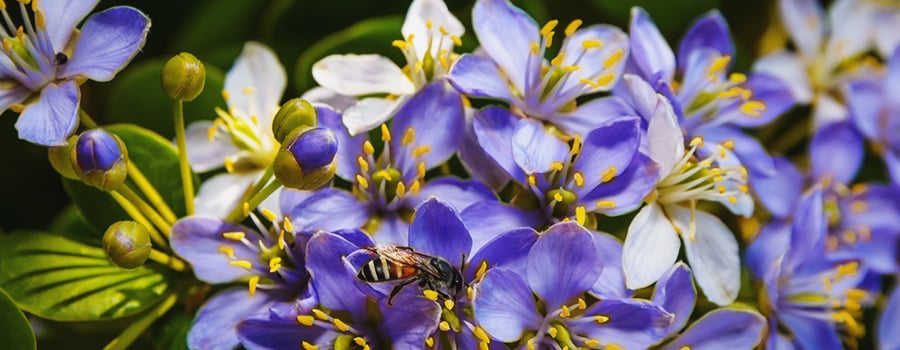
GUAIOL: POTENT, PINEY, AND THERAPEUTIC
Unlike ocimene, guaiol is actually a sesquiterpenoid alcohol instead of an oil. Like other terpenes, however, it is also found in a variety of plants, mainly the wood from cypress pine and guaiacum.
Guaiol, as might be expected, is generally described as having a unique piney aroma, similar to that of other terpenes like pinene.
Guiaol has a long history as a natural medicine. The guaiacum plant, known to contain high concentration of guaiol, was brought back to Europe by the Spanish after they discovered Santo Domingo and quickly built up a reputation as a cure for syphilis.
In the 18th century, guaiacum was suggested to stimulate menstruation and was even used as an abortifacient. It has also been noted as a local stimulant that may help in the treatment of a sore throat, gout, rheumatism, and more.
More recently, guaiol has been studied for its unique antimicrobial properties. Researchers in 2007 found[4] that the compound can be effective against a variety of bacterial and fungal strains.
In 2013, a new study[5] on guaiol found that the terpene may also serve as a natural insecticide.
Given that guaiol has a strong pine aroma, it may be worthwhile looking for this terpene in strains with similarly strong pine scents, especially Gorilla, Berry, and Diesel varieties. Royal Gorilla, Sour Diesel, Kali Dog, and Haze Berry all might be some worthwhile strains to check out.
Like ocimene, guaiol has a relatively low boiling point of just 92°C. Hence, to get the most of this terpene, we suggest using a vaporizer at a low temperature setting.

REMEMBERING THE ENTOURAGE EFFECT
The entourage effect is a term used to describe the way terpenes and other compounds synergise. Ocimene and guaiol are able to work together with other terpenes and cannabinoids to produce potent, unique effects.
Therefore, it is always important to remember that while the individual potential of these terpenes is already impressive, they are best used together in whole plant therapies with other compounds.
THE FUTURE OF TERPENE RESEARCH
While terpenes are gaining a lot of attention from both cannabis users and researchers, there is still a lot we don’t know about how these compounds affect our bodies and contribute to the overall potential of cannabis-as-medicine.
Unfortunately, conducting research into cannabis and its compounds remains difficult. Despite various efforts to legalize the drug around the world, prohibitionist policies make studying the plant difficult and unattractive for researchers.
Hopefully, as the legalization movement gains momentum and attitudes towards the cannabis plant change, more research will go into this field to uncover the true potential of compounds like ocimene and guaiol.
- Chemical Composition and Anti-Inflammation Activity of Essential Oils From Citrus Unshiu Flower - PubMed https://www.ncbi.nlm.nih.gov
- Biological Activities and Composition of Ferulago Carduchorum Essential Oil - PubMed https://www.ncbi.nlm.nih.gov
- Phytochemical Analysis and in Vitro Antiviral Activities of the Essential Oils of Seven Lebanon Species - PubMed https://www.ncbi.nlm.nih.gov
- Microbial Transformation of (-)-Guaiol and Antibacterial Activity of Its Transformed Products - PubMed http://www.ncbi.nlm.nih.gov
- Europe PMC http://europepmc.org
































